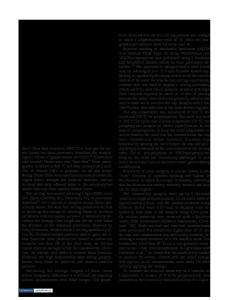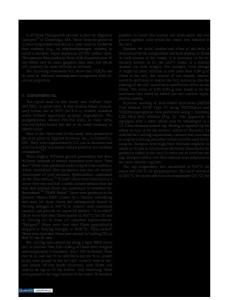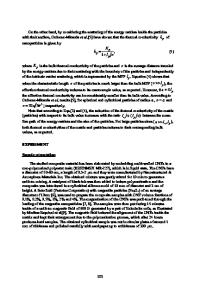Vapor grown carbon fiber reinforced aluminum composites with very high thermal conductivity
- PDF / 401,538 Bytes
- 4 Pages / 576 x 792 pts Page_size
- 22 Downloads / 316 Views
The first use of continuous vapor grown carbon fiber (VGCF) as reinforcement in aluminum metal matrix composite (Al MMC) is reported. Al MMC represents a new material for thermal management in high-power, high-density electronic devices. Due to the ultrahigh thermal conductivity of VGCF, 1950 W/m-K at room temperature, VGCF-reinforced Al MMC exhibits excellent thermal conductivity that cannot be achieved by using any other carbon fiber as reinforcement. An unprecedented high thermal conductivity of 642 W/m-K for Al MMC was obtained by using 36.5% of VGCF.
It has become evident that increasing power level and density of microelectronic chips has lead to a serious concern of thermal management.1 A number of advanced monolithic materials are therefore being evaluated or developed for use as substrates or heat sinks in electronic packaging. Recently, composite materials, especially metal matrix composites (MMC), have also been found to be extremely attractive for such an application.2"4 Typical MMC for electronic packaging components have been shown to exhibit tailorable coefficient of thermal expansion (CTE) by varying the architecture of reinforcing agents and reduced weight due to the incorporation of lower density reinforcing agents. These composite materials include C-fiberreinforced aluminum or copper, silicon carbide (SiC) particle-reinforced aluminum, and diamond particlereinforced aluminum.5"8 However, these composite materials do not show substantial improvement in thermal conductivity, which is a key property requirement for packaging components. In this paper, we describe the first use of continuous vapor grown carbon fiber (VGCF) as reinforcement for Al MMC. The resulting composite exhibits excellent thermal conductivity that cannot be achieved by using any other carbon fiber as reinforcement. VGCF is grown through the pyrolysis of hydrocarbon gas in the presence of a metal catalyst. VGCF exhibits the highest thermal conductivity among all the carbon fibers. The room temperature thermal conductivity of VGCF has been measured to be as high as 1950 W/m-K. 9 Figure 1 compares the room temperature thermal conductivity, as well as electrical resistivity, of various carbon fibers and metals.10 Although growth of carbon fibers from vapor phase hydrocarbon was observed more than 100 years ago,11 methods for producing research quantities had not been developed until the 1970's.12-13 VGCF can be produced with14 or without15-16 J. Mater. Res., Vol. 10, No. 2, Feb 1995 http://journals.cambridge.org
Downloaded: 14 Mar 2015
a substrate to support the catalyst particles. VGCF produced without the use of substrate to support the catalyst particles is discontinuous (50 to 100 /xm in diameter). Discontinuous VGCF has been recently used as reinforcement in epoxy composite for advanced electroconductive adhesive agent.17 On the other hand, VGCF produced on catalyst particles seeded substrates can have lengths greater than 30 cm. Using this method, mats of VGCF were obtained in our laboratory. This allows the formation of s
Data Loading...










